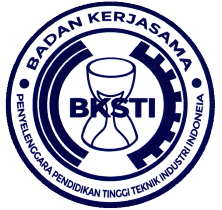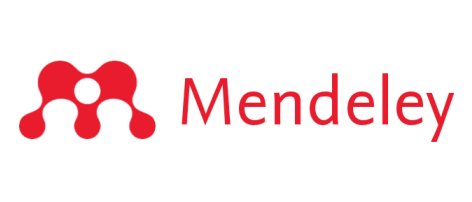Pemodelan Biaya Reverse Logistics Pada Pengelolaan Kemasan Minyak Goreng
DOI:
https://doi.org/10.52759/inventory.v4i1.108Keywords:
Cooking Oil Packaging, Linear Programming, Reverse Logistics, WasteAbstract
Indonesia is listed as the second largest contributor to plastic waste in the world. The problem currently faced is the increasing amount of plastic waste which is one result of the business processes of companies using plastic packaging or plastic packaging manufacturers, one of the plastic packaging waste that comes from cooking oil packaging. The method to solve the problem of processing cooking oil packaging waste carried out in this study is to modify the existing system into a reverse logistics system. Currently, cooking oil companies have not implemented reverse logistics to reduce plastic packaging production. The reverse logistics system applied in this study is to modify cooking oil packages into packages that can be used repeatedly. The reverse logistics system that is applied is then modeled linerly to find out the minimal costs in implementing reverse logistics for the packaged cooking oil. Based on the development of the packaged cooking oil waste management model, it is known that the results of determining the model solution with the linear programming model are the minimal costs for reverse logistics of packaged cooking oil. The model is designed to do a sensitivity analysis by making changes to the reverse logistics cost parameters, changes in the reverse logistics cost parameters resulting in changes to the results that are directly proportional. The designed model is implemented using PT. XYZ which has a similarity with the designed system.
Downloads
References
Badan Pusat Statistik (BPS). “Jumlah Penduduk Hasil Proyeksi Menurut Provinsi dan Jenis Kelamin (Ribu Jiwa), 2018-2020”. 2020.
Sistem Informasi Pengelolaan Sampah Nasional Kementrian Lingkungan Hidup dan Kehutanan (SIPSN, 2020) "Komposisi Sampah". 2020.
Badan Pusat Statistik (BPS). “Rata-Rata Konsumsi per Kapita Seminggu Beberapa Macam Bahan Makanan Penting 2007-2019”. 2019.
Badan Pusat Statistik (BPS). "Statistik Daerah Provinsi Sumatera Barat 2020". CV.Graphic Dwipa. Padang. 2020.
N. Ab, H. Nik, and S. Yaakub, “The Pressure for Reverse Logistics Adoption among Manufacturers in,” Asian J. Bus. Account., vol. 8, no. 1, 2015.
Purwaningrum, Pramiati, "Upaya Mengurangi Timbulan Sampah Plastik di Lingkungan, Indonesian Journal of Urban and Environtmental Technology, JTL Vol 8 No.2, Desember 2016, 141- 147
B. M. Arthaya, P. K. Ariningsih, and C. Haryani, “Peran Konsep Reverse Logistic Dalam Perancangan Penanganan Baterai Laptop Bekas,” J. Otomasi Kontrol dan Instrumentasi, vol. 10, no. 2, pp. 97–110, 2018.
W. Adhi, W. P. Rahayu, N. Indonesia, and J. Barat, “Manajemen Rantai Pasok Susu Pasteurisasi dengan Pendekatan Reverse Logistic Pasteurization Chain Marketing Management,” J. Manaj. Transp. dan Logistik, vol. 05, no. 01, pp. 29–42, 2018.
P. Kushwaha, “Conceptual Reverse Logistics Model used by Online Retailers Post Covid-19 Lockdown,” Int. Res. J. Bus. Stud., vol. 14, no. 3, pp. 229–234, 2021.
F. A. S. Dwicahyani, Anindya Rachma; Rifa, “Review Bidang Kajian Model Persediaan pada Reverse Logistics dan Sistem Rantai Pasok Siklus Tertutup,” J. SENOPATI, vol. 3 (1), no. September, pp. 1–10, 2021.
H. Suryana, “Pengembangan Model Daur Ulang Sampah Plastik Dalam Jaringan Sistem Reverse Logistics,” J. Media Tek. dan Sist. Ind., vol. 3, no. 2, pp. 90–94, 2019.
F. Pulansari, “Desain model sistem reverse logistics pada industri elektronika konsumsi,” Institut Teknologi Sepuluh Nopember, 2017.
B. Desticioglu, H. Calipinar, B. Ozyoruk, and E. Koc, “Model for Reverse Logistic Problem of Recycling under Stochastic Demand,” Sustainability, pp. 1–19, 2022.
W. T. Farizqi, U. Ciptomulyono, and A. Rusdiansyah, “Pengembangan Model Reverse Logistics Baterai Aki Bekas dengan Pendekatan Goal Programming,” Institut Teknologi Sepuluh Nopember, 2008.
A. Bal and S. Itir, “A goal programming model for sustainable reverse logistics operations planning and an application,” J. Clean. Prod., vol. 201, pp. 1081–1091, 2018, doi: 10.1016/j.jclepro.2018.08.104.
I. Masudin and T. E. Saputro, “Reverse Logistics Modeling Considering Environmental and Manufacturing Costs: A Case Study of Battery Recycling in Indonesia,” Int. J. Technol., vol. 10 (1), no. February, pp. 189–199, 2019, doi: 10.14716/ijtech.v10i1.2164.
B. H. Thacker, S.W. Doebling, F. M. Hemez, M. C. Anderson, J. E. Pepin and E. A. Rodriguez “Concepts of Model Verification and Validation,” 2004.
H. G. Daellenbach and D. C. Mcnickle, Management Science: Decision Making Through Systems Thinking. New York: Palgrave Macmillan, 2005.
E. Usman, Nurul Afifah; Amrina, “Seminar Sistem Produk XI dan Seminar Nasional VI Manajemen dan Rekaya Kualitas,” in Usulan Rute Pengiriman Produk Minyak Goreng Kemasan di PT Incasi Raya Padang, 2015, p. J-13




